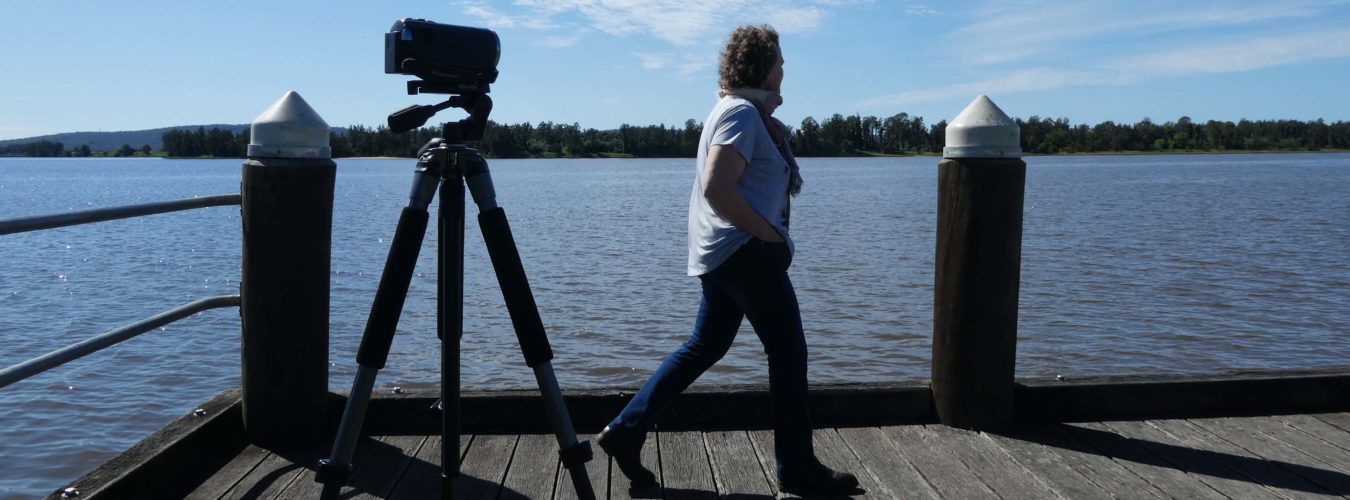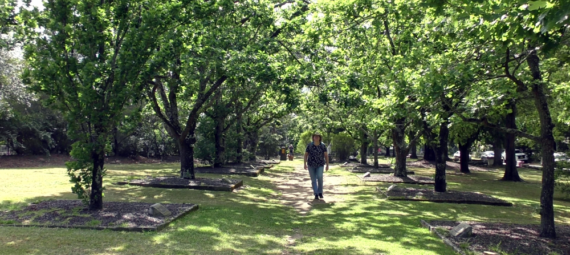October 2021: Dharug Country
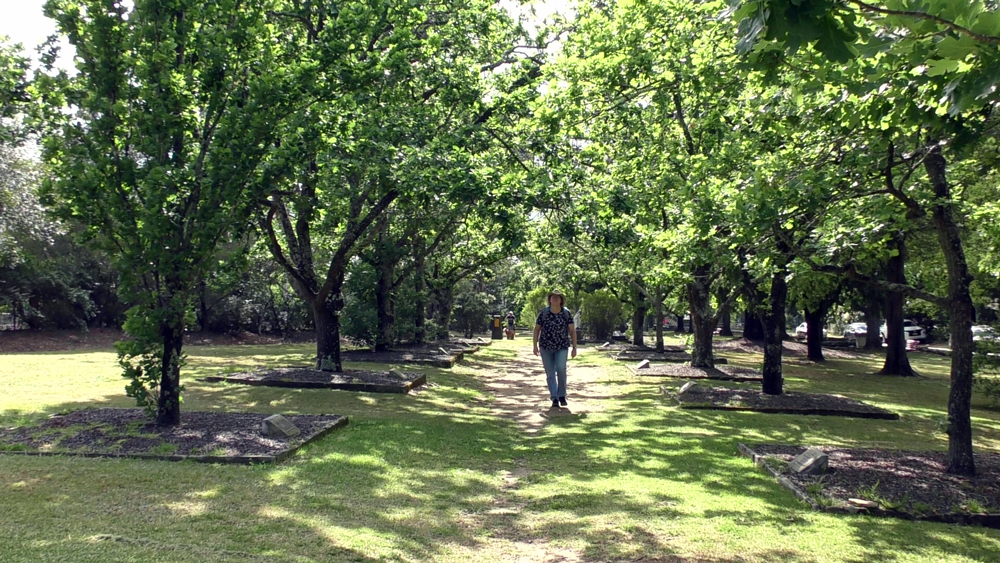
Just a stone’s throw from the busy Great Western Highway in the Blue Mountains village of Faulconbridge lies what is arguably Australia’s most political park.
Political not because of some dodgy pork barrelling scandal of the sort that sometimes makes news headlines, but because of what it contains – a a corridor of oak trees in various stages of growth.
Known as the Corridor of Oaks, each tree commemorates one of the long line of Australian Prime Ministers since Federation in 1901 – a quirky reminder that the Australian political system was once characterised by a collection of self-governing British colonies rather than the federal system (with a Prime Minister in charge) we take for granted today.
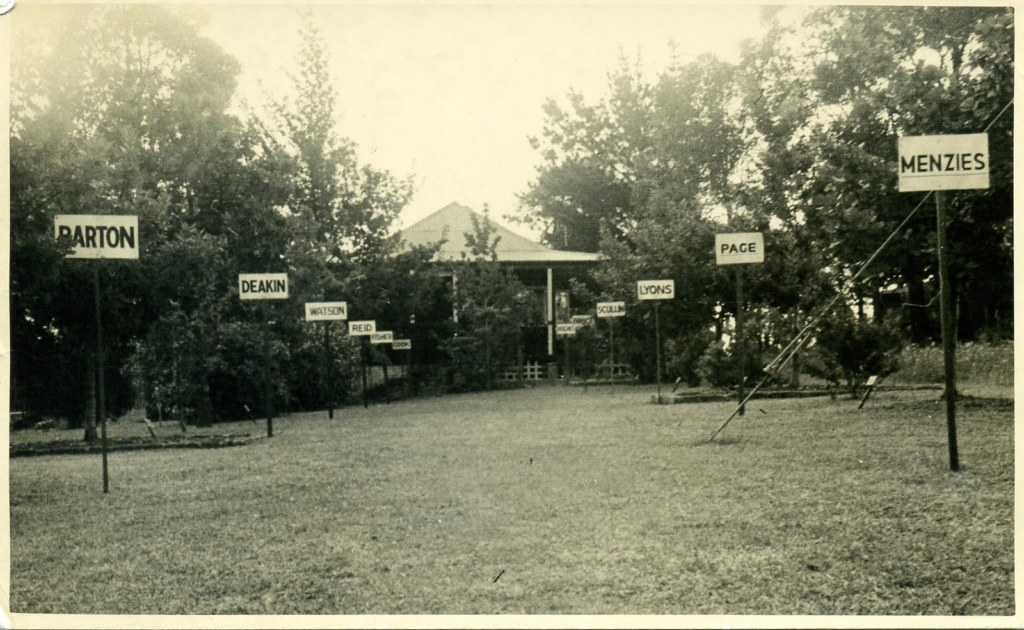
And the twist in this tale is that each tree was planted either by the Prime Ministers themselves, or by a close surviving relative – an interesting personalisation which has endured since the first tree was planted by PM Joseph Lyons in 1934.
Quirky corridor
The green corridor is a bit ideosyncratic in some ways. It doesn’t follow the expected (perhaps logical) chronological order of each PM’s term in office. Kevin Rudd and John Howard are at the far western end while Julia Gillard is at the far eastern end – which is not how history unfolded.
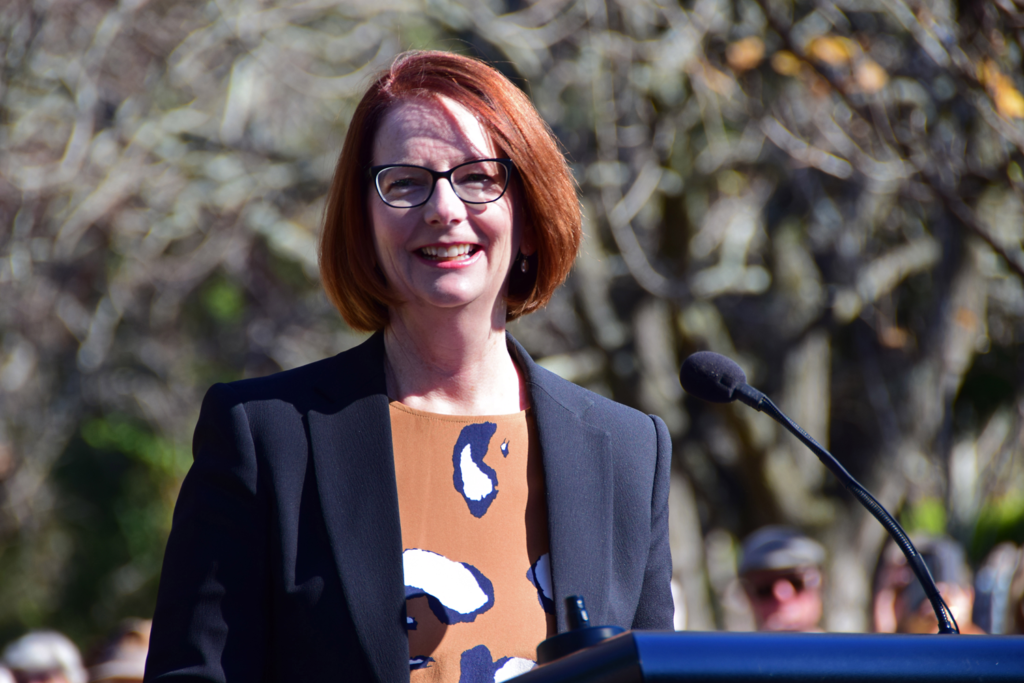
Nor does the size of each oak necessarily match that sense of chronology. Where you’d expect the planting of Gough Whitlam (for example) to be larger (or similar) to that of Malcolm Fraser who followed him under such controversial circumstances. In fact, the opposite is true. Though Whitlam’s and Fraser’s trees face one another on appropriately opposite sides of the corridor, Fraser’s is a large mature tree (planted in 1979) while Whitlam’s (planted in 1976) is a somewhat small and stunted specimen.
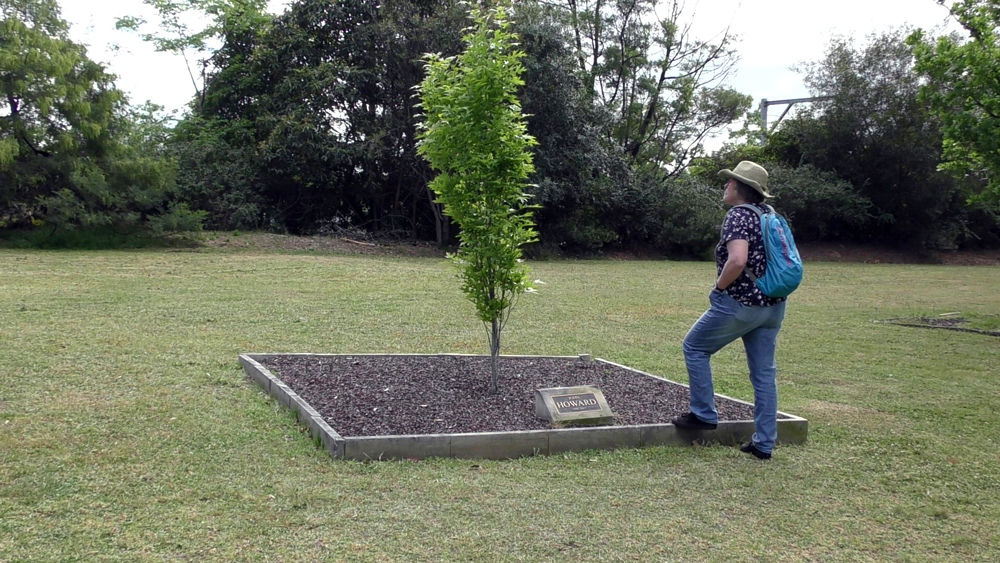
Vandalism accounts for some of these size anomalies. Julia Gillard’s and John Howard’s trees were both ripped out by vandals after planting and had to be replaced. Natural attrition, site differences, and seasonal variation might account for other differences in size, but it’s quirky nonetheless.
Our most recent Federal leaders are not there at all. Tony Abbott, Malcolm Turnbull, and Scott Morrison oaks have yet to be placed.
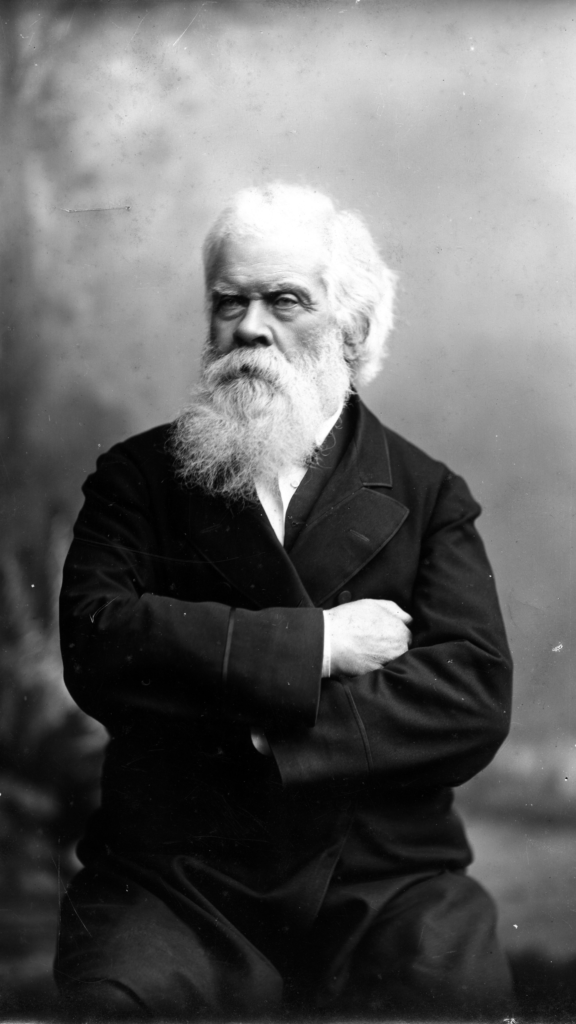
Henry Parkes 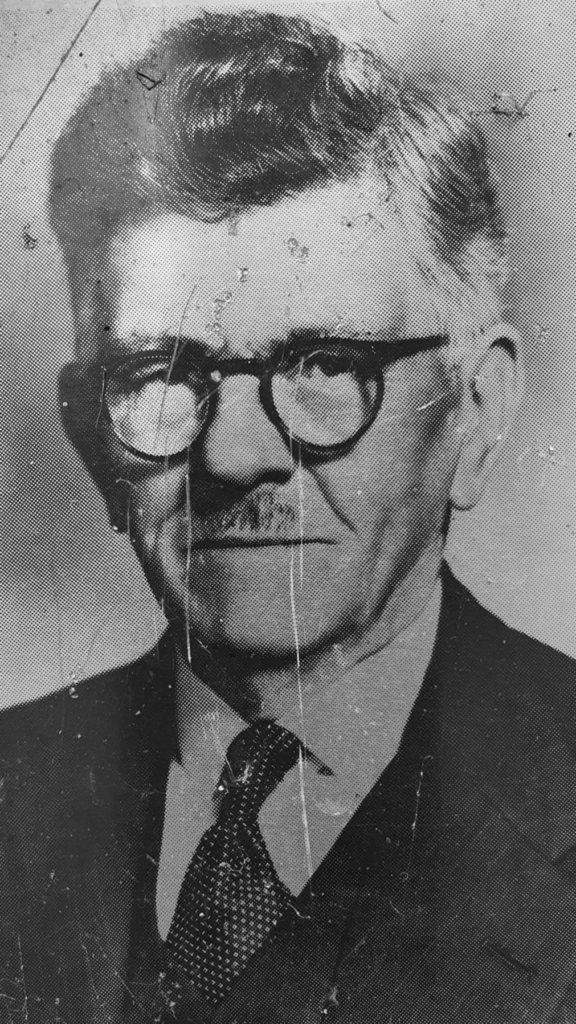
Joseph Jackson MLA 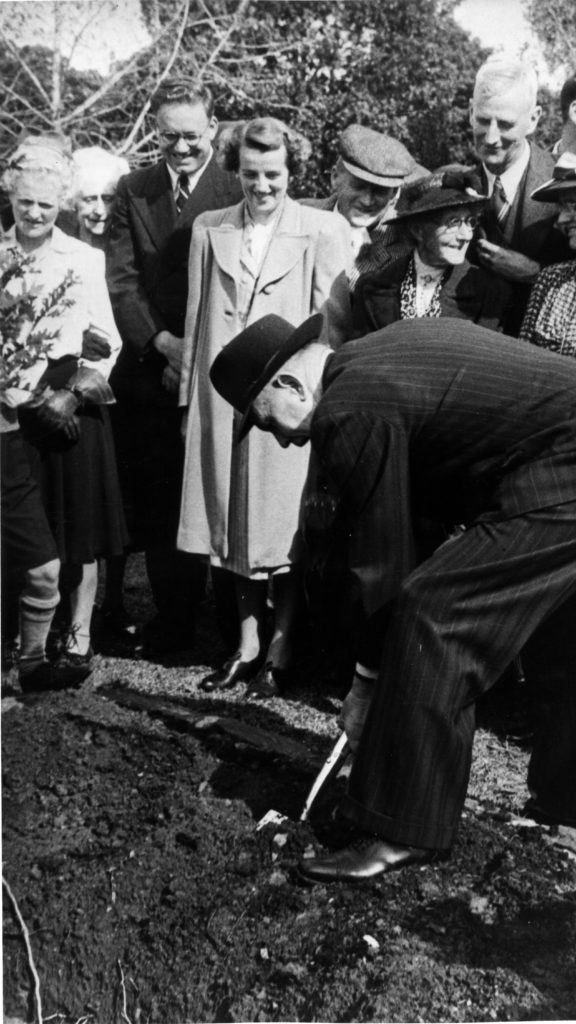
Ben Chifley
How it all started
The Corridor of Oaks was the idea of local businessman and State Parliamentarian (1927-1956) Joseph Jackson MLA. He was a noted admirer of Sir Henry Parkes whose spirited advocacy of an Australian Commonwealth lead to Federation in 1901. Sir Henry is Faulconbridge’s most famous son – the village in fact grew up around the homes he built there in the 1870s. Faulconbridge was his mother’s maiden name, and his home was called Faulconbridge House.
The street facing the park is called Sir Henry Parade, and the man himself and various family members are buried just down the road in Faulconbridge Cemetery.
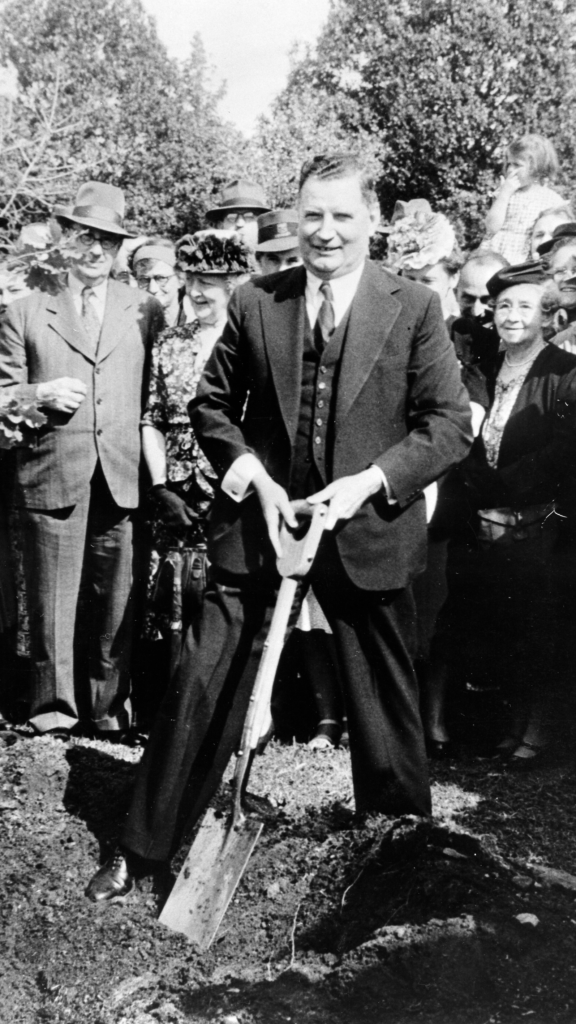
Aurthur Fadden 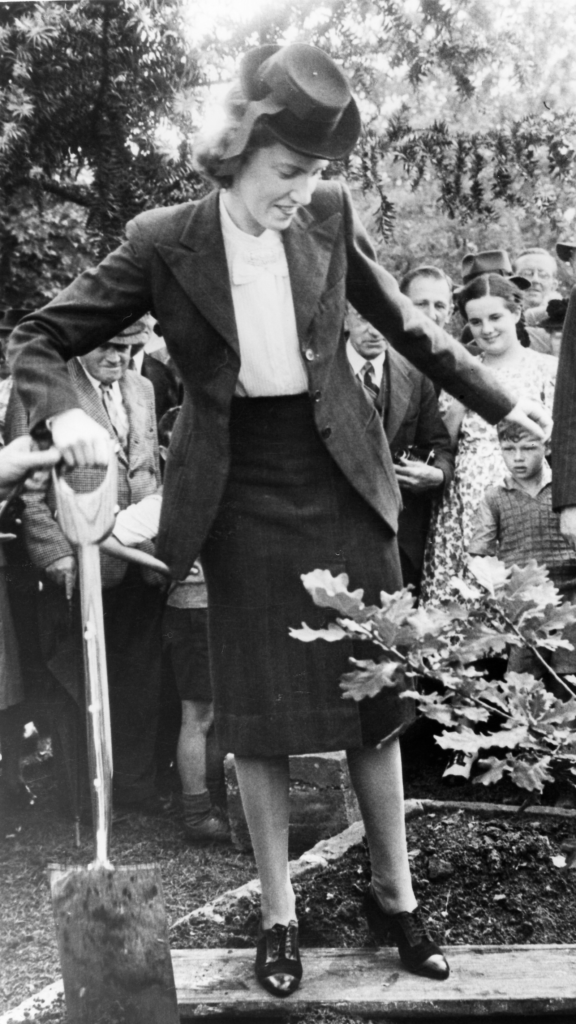
Elsie Cole for John Curtin 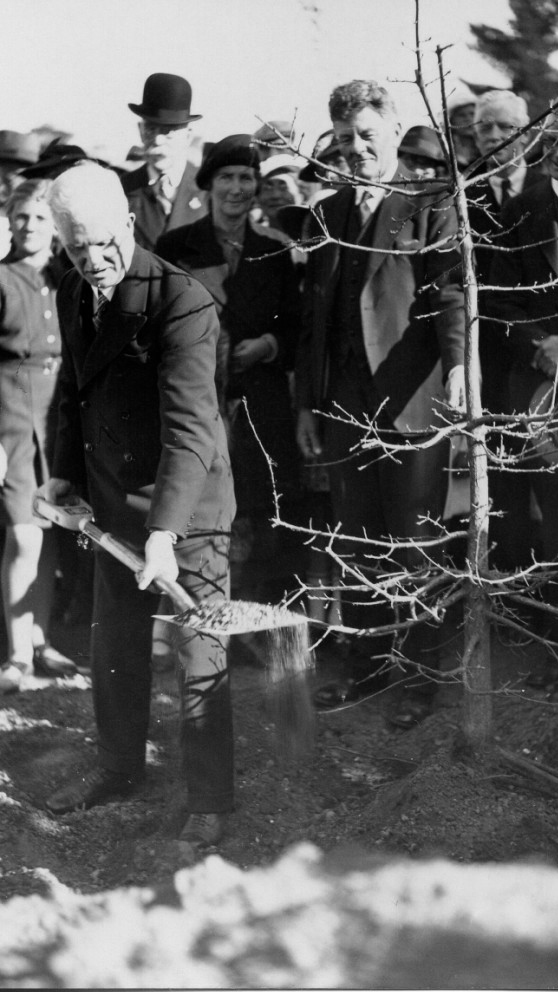
James Scullin
Joseph Jackson bought Faulconbridge House many years later, and donated land nearby for the memorial corridor – land which had orginally been part of original estate of the “Father of Federation”, Henry Parkes.
Establishing the corridor began with a flurry of plantings. The first was a low key ceremony when Joseph Lyons put in his sapling in September 1934.
In June 1935 a further four oaks went in. One was for Australia’s first PM Edmund Barton who had died 15 years previously. This was planted by his wife and daughter. At the same ceremony, George Reid’s wife planted an oak for her late husband.
Former Prime Ministers Chris Watson and Sir Joseph Cook were on hand that day to plant their own trees.
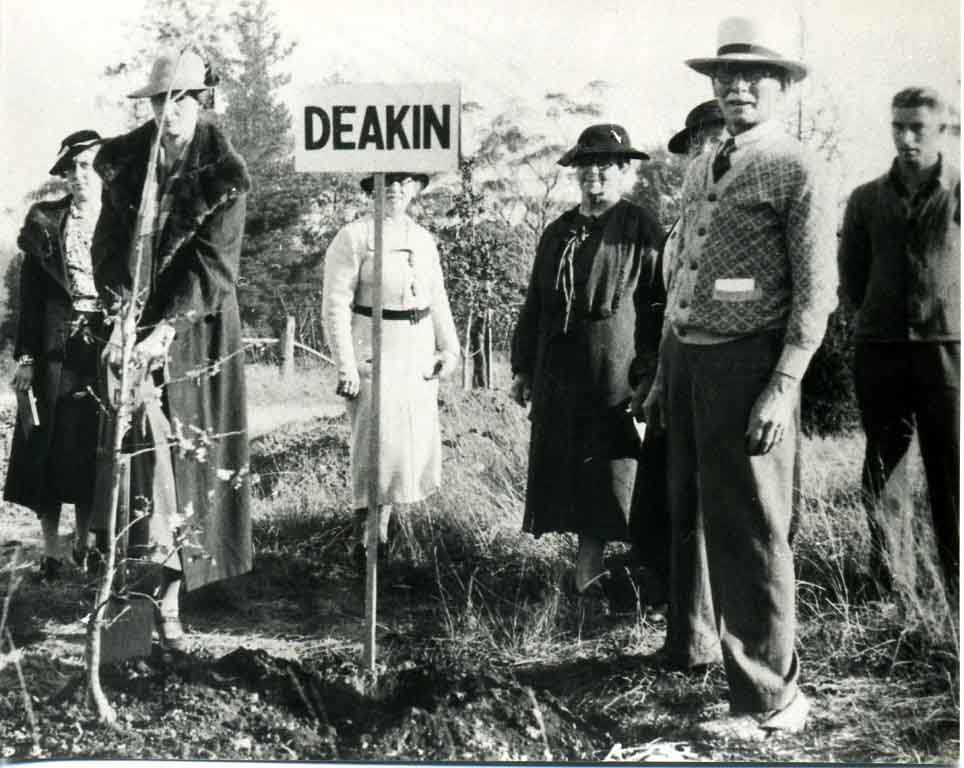
William Hughes planted the sixth oak in August 1935. Alfred Deakin’s tree went in at the same time, planted by his daughter.
With war looming, 1939 was a busy year for the memorial. Stanley Bruce planted his own tree in March. Andrew Fischer’s wife added his tree in September, and James Scullin was there on the same day to set his own sapling in the ground.

Many others would be planted over time:
1941: Earle Page, in person (May); Robert Menzies, in person (October).
1947: Authur Fadden, in person; John Curtin, by his daughter; and Ben Chifley, in person (all in December).
1954: Frank Forde, in person (July)
1967: Harold Holt, by his wife, (October)
1969: John McEwen, in person (March)
1971: John Gorton, in person (July)
1974: William McMahon, in person (April)
1976: Gough Whitlam, in person (September)
1979: Malcolm Fraser, in person (March)
1987: Bob Hawke, in person (April)
1995: Paul Keating, in person (August)
2000: John Howard, in person (April)
2012: Kevin Rudd, in person (October)
2017: Julia Gillard, in person (July).

In the Press
The following account of the tree planting ceremony in 1935 was printed in The Katoomba Daily, July 2 edition:
“This corridor of ‘Green Robed Senators of the Mighty Woods’ will live forever as some semblance to the mighty man of valor and his followers. Australian history will record Faulconbridge as a place of achievement,” stated Mr. J. Jackson, M.L.A., organiser of the tree-planting ceremony at this Mountain township on Saturday. The occasion was one admirably inspired by the member for Nepean to commemorate the memory of the founder and father of Federation, Sir Henry Parkes, and to honour those who have carried on the great work thus started by this grand old man, up till the present day. Mr. Jackson carried his scheme to fruition on Saturday with the provision of oak trees in earliest stage, to be planted by Prime Ministers, past and present (or their representatives) set the stage for the epoch-making ceremony.
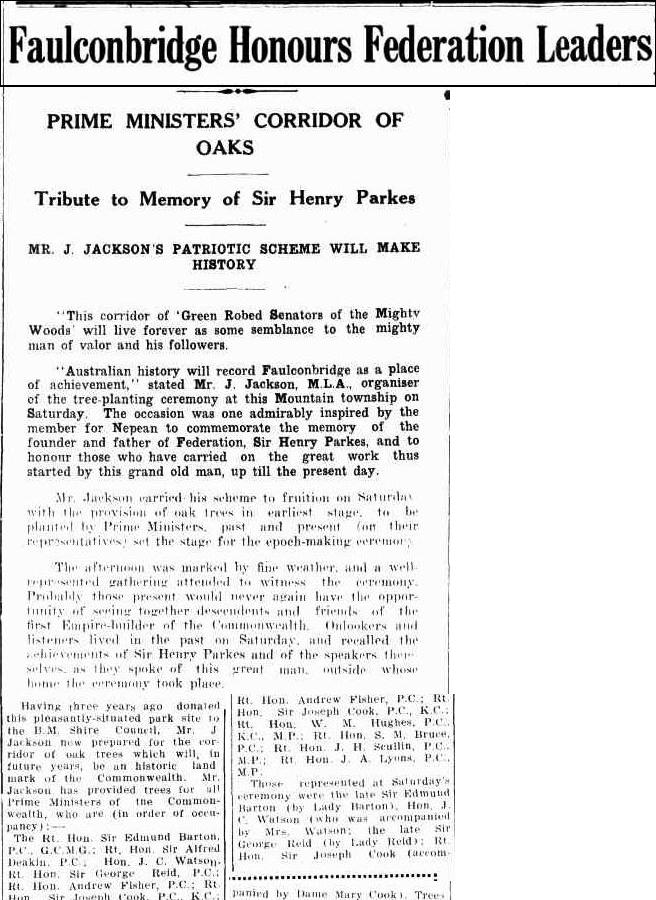
“The afternoon was marked by fine weather, and a well-represented gathering attended to witness the ceremony. Probably those present would never again have the opportunity of seeing together descendants and friends of the first Empire-builder of the Commonwealth. Onlookers and listeners lived in the past on Saturday, and recalled the achievements of Sir Henry Parkes and of the speakers themselves, as they spoke of this great man, outside whose home the ceremony took place. Having three years ago donated this pleasantly-situated park site to the B.M. Shire Council, Mr. J Jackson now prepared for the corridor of oak trees which will in future years, be an historic landmark of the Commonwealth. Mr. Jackson has provided trees for all Prime Ministers of tne Commonwealth, who are (in order of occupancy) : — The Rt. Hon. Sir Edmund Barton, P.C., G.C.M.G. ; Rt. Hon. Sir Alfred Deakin, P.C.; Hon. J. C. Watson, Rt. Hon. Sir George Reid, P.C.; Rt. Hon. Andrew Fisher, P.C. ; Rt. Hon. Sir Joseph Cook, P.C., K.C.; Rt. Hon. W. M. Hughes, P.C., K.C., M.P.; Rt. Hon. S. M. Bruce, P.C.; Rt. Hon. J. H. Scullin, P.C., M.P.; Rt. Hon. J. A. Lyons, P.C., M.P.
“Those represented at Saturday’s ceremony were the late Sir Edmund Barton (by Lady Barton), Hon. J. C. Watson (who was accompanied by Mrs. Watson; the late Sir George Reid (by Lady Reid); Rt. Hon. Sir Joseph Cook (accompanied by Dame Mary Cook. Trees were planted under the supervision of Mr. Jackson, by these people, each of whom expressed his or her pleasure, and as each tree was lowered into position, earnestly hoped: “That this tree and its seed may endure.” Lady Barton was the first to plant a tree, assisted by her daughter (Mrs. Maughan). Then followed the Hon. J. C. Watson and Sir Joseph Cook. Other trees will be planted at an opportune time, by the others mentioned.“
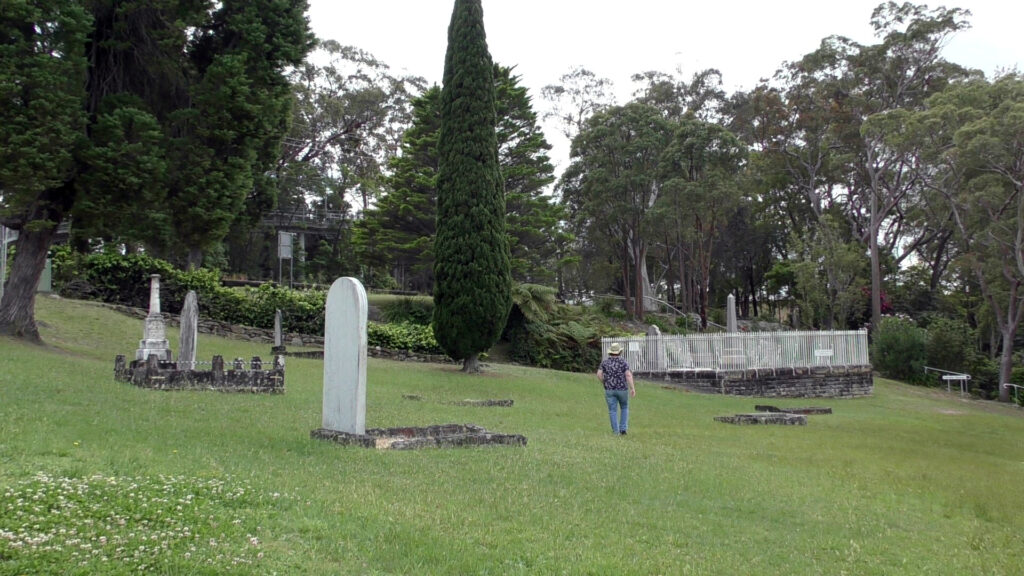
Grave concerns
The man whose achievements gave rise to the Corridor of Oaks and to the village of Faulconbridge is buried not far away. You can take a look at the grave site which is just off the road.
He was buried in the cemetery at Faulconbridge in a private ceremony on the 27 April 1896. At the time of his death, he had been five times Premier of New South Wales, a member of the colony’s first Parliament, a leader of the Federation Movement and one of the most prominent political figures in the colony over a period of almost 40 years.
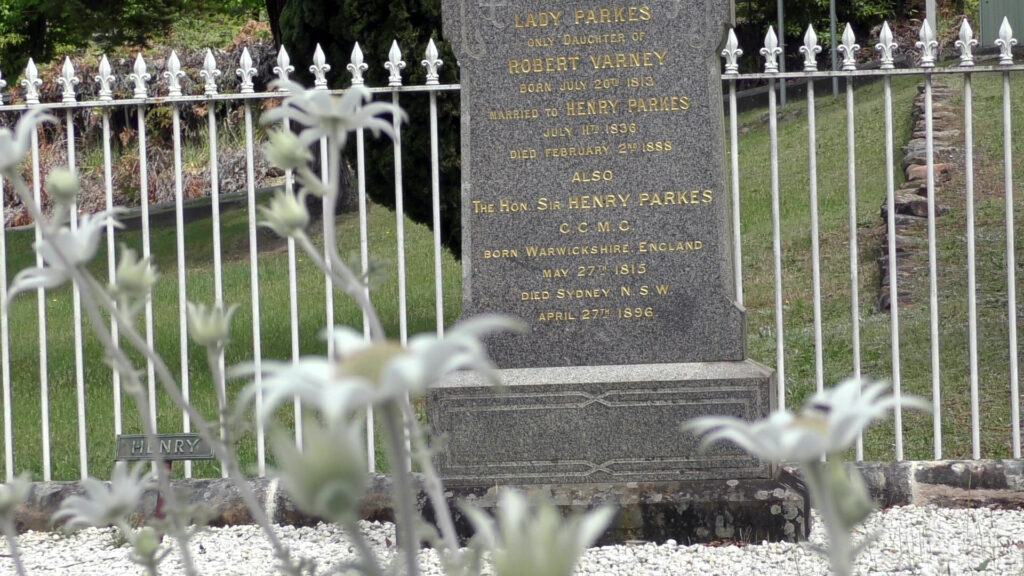
A bronze plaque was placed on the tombstone in 1915, the centenary year of his birth, in remembrance by the Government and the people of Australia for his achievements in public works. The plaque was stolen in 1940 and was replaced at a later date.
There were calls in 2019 for CCTV cameras to be installed at the site after vandals smashed a seat next to the grave.
Take a break
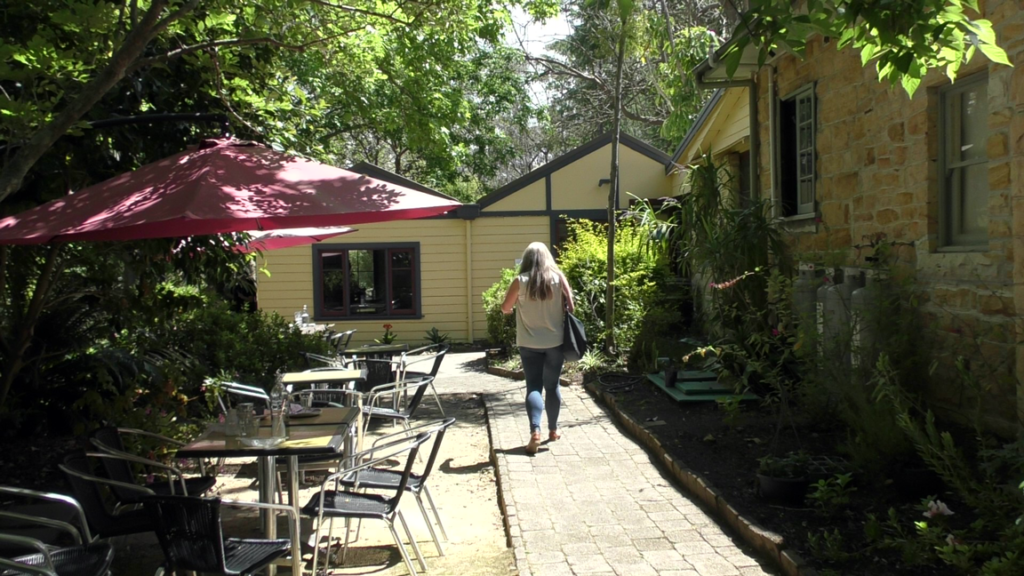
When you’ve finished exploring this most political of places, you might be looking for somewhere for a bite to eat. We booked into The Lindsay Cafe at 2 Norman Lindsay Cres, Faulconbridge.
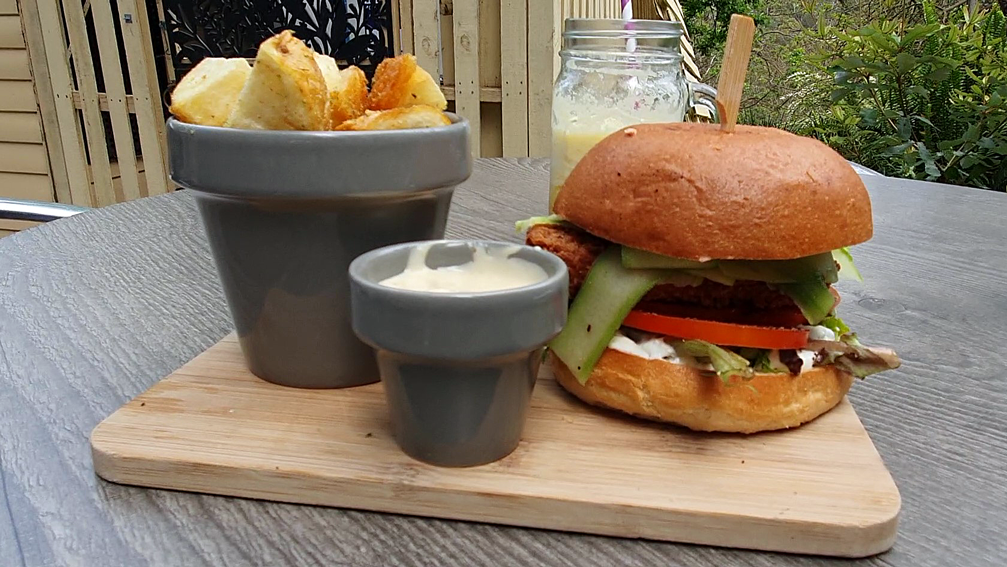
The cafe is only a short drive away from the Corridor of Oaks, behind the Norman Lindsay Gallery and Museum. On the day of our visit (October 22, 2021) the gallery was closed due to COVID 19, but the cafe was humming. We enjoyed a delicious lunch in the shady garden.
